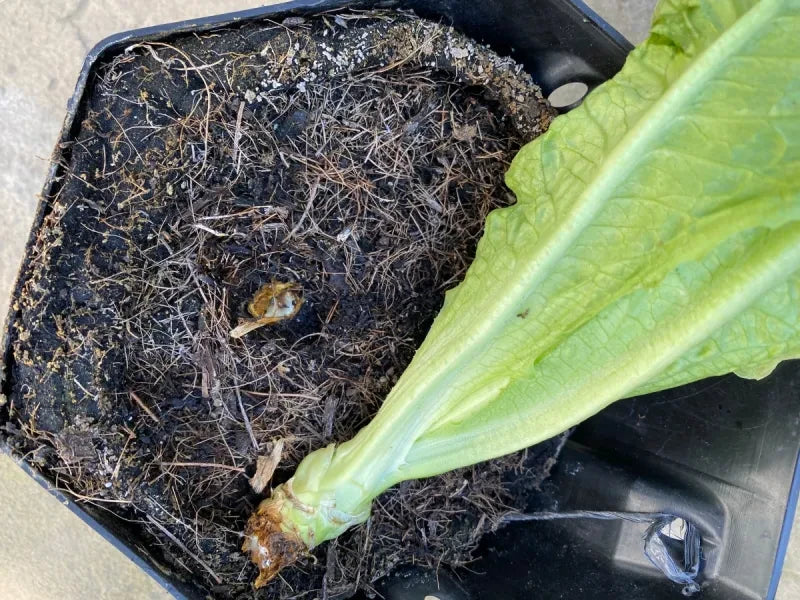
The Root of the Problem: Understanding Root Rot
Share
Root rot (also called crown rot)
is a term that is commonly used to describe a pathogen that attacks a plant’s root system. These pathogens cause a deterioration of the plant roots, which can happen slowly or quite quickly depending on the conditions.
What is root rot?
Root rot is actually a fungal disease. There are a number of different pathogens that can cause this issue. Fusarium and Phytophthora pathogens are two types that commonly affect home gardeners. Thielaviopsisbasicola is another pathogen that can affect lettuce and other crops.
The different root rot fungi will affect different plants depending on their host. However, all of the fungi prefer wet or consistently moist soils. Because of this, we often see root rot issues in the fall and winter. However, it can occur at any time during the year, especially during wet conditions. This issue can also occur in potted plants as well as in-ground plants.
It can be hard to initially spot the signs of root rot. In fact, the signs can go completely unnoticed until the root deterioration is quite extreme!
Early signs can include wilting or discoloration of the plant. This can affect just some of the plant leaves/stems or all of it. Sometimes, only one side will be affected initially. Usually, the older growth is the first to show signs.
As the issues progress, the wilting and discoloration will spread, eventually affecting the younger growth as well as the mature growth. Leaves may turn yellow or even a dark reddish-brown color as they die back. You may also notice stunted or slow growth.

Below ground signs of the disease can include a darkening of the roots. They may turn almost black as the tissue dies back. Certain plants may also show some signs of root rot at the soil line. The stem may become soft or almost “mushy” as the disease progresses.
What to do if you suspect root rot:
Since root rot can be hard to notice until it’s too late, it’s often too late to save the plant. Young plants are especially susceptible and can die back quickly.
The best practice is to pull and remove any plants (along with roots) that are affected by root/crown rot. Since certain root rot pathogens can live in the soil for some time, it’s also advisable to not plant in that soil again. If the soil was in a container, throw it away along with any diseased plant material. Wash out the container or grow bag with a 10:1 water-bleach solution and let it air dry in the sun for a few days.
Ways To Help Prevent Root Rot:
- Avoid over-watering
- Place plants in a sunny spot
- Use a fan to increase air flow if growing inside or in a greenhouse
- Water early in the morning so that the plants have more sunlight hours to dry out
- Use well-draining soil that isn’t compacted or heavy
- Do not bury the crown of the plant below the soil line (for most plants, including greens)
- Avoid fertilizing during very hot conditions and during wet conditions
- Wash tools and containers between uses to help prevent spread of fungal diseases

Try some of our soil and soil amendments to start growing regeneratively! You'll be amazed at how much easier it is to grow healthy leafy greens, herbs, and veggies. Everything is easier because your plant health is in tip top shape.
